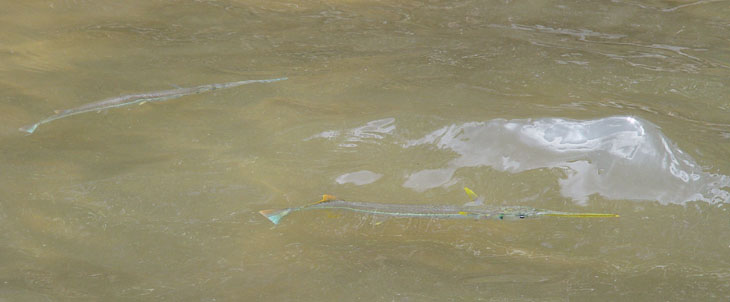Skimming through my archive photos looking for a topic for a blog post, I found one! Amazing, isn’t it? Anyway, one of the things I tell my photography students (and anyone else that will listen) routinely is that chasing equipment isn’t the key to getting those wonderful images they’ve been after. I’d use myself as an example, because I’ve worked on a shoestring all my life, but I may not be getting the wonderful images they’ve been after myself. I’ve gotten plenty that I’ve liked, so we’ll just stick with that and proceed from there.
I have a page set up on this topic already, but briefly, elaborate equipment doesn’t magically create good images, and the lack thereof doesn’t mean there aren’t ways to work around it. While I have always had an interest in aquatic things, and love snorkeling, I’ve never gotten scuba-certified and never owned an underwater camera. So, I cheated, and while I lived in Florida, I set up a small fishtank to work from. Snorkel trips down to the nearby saltwater lagoon, close enough to walk or bicycle to, provided lots of small subjects, and the tank afforded me something that I wouldn’t be getting even with a decent underwater camera rig: the ability to control conditions, lighting, and be handy when certain species displayed something noteworthy.
From time to time, I would spot a subtle, fast, and very shy fish in the lagoon, but had a very difficult time getting close enough to obtain a decent shot. Plus, shooting from above the surface almost always results in distortion and glare from the rippling surface.

I did what I could, but I knew that even with an underwater camera, I wasn’t getting close enough to these spooky buggers to get any kind of clarity through the water, certainly not a nice detail shot. But then one day, I spotted a small collection of fry, baby fish, that I was able to herd into a more enclosed area and scoop up an example in a collecting jar that I’d been carrying with me routinely. Once home, I installed it in my tank, adjusted the lights, and set to work. The fish only had a limited amount of room to dart away within, the suspended sediment was much reduced, and I could adjust the lights to get the perfect angle.

Is that better? This (after a very brief search with a guess at the name) is a Redfin Needlefish (Strongylura notata,) and while my grinning model here isn’t 5 cm (2 in) long, they apparently can get to be quite large. My wild example at top is probably in the range of 15-25 cm if memory serves.
But you want a better look at that head, don’t you?

I sharpened this a little bit to bring out those teeth better, considering that they’re probably half a millimeter in length, or less. Even with a proper underwater macro lens and a lighting rig that could illuminate a subject this close, there’s very little chance I could get close enough to such a subject in the wild without resorting to baiting, and a whole lot of patience. Instead, my actual costs were for the fishtank and the off-camera cord for my flash unit, and I shot a sequence of photos in the space of a few minutes before releasing this guy back where I caught him.
So, before you throw money at more camera gear, see what can be accomplished with a little thought. Every piece of equipment, every technique, has its good and bad points, and it’s probably better to examine the good points of what’s available to you now (and the bad points of the waiting and the cost of the new equipment,) rather than reversing that as too many people do, and weighing the good points of the new equipment against the bad points of their current equipment. Your wallet, and perhaps your spouse, may be much happier, too.



















































